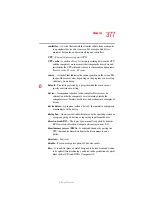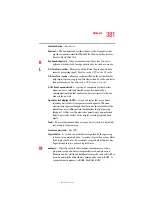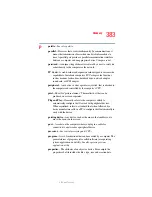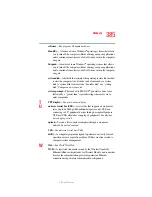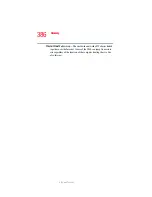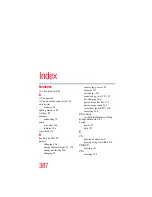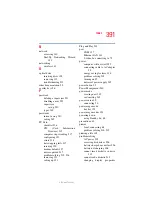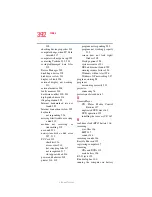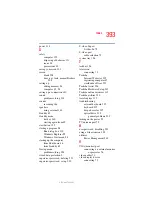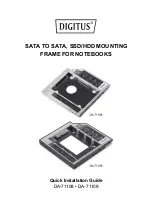
379
Glossary
5.375 x 8.375 ver 2.3
E
emulation—A technique in which a device or program imitates another
device or program.
enable—To turn on a computer option. See also disable.
executable file—A computer program that is ready to run. Application
programs and batch files are examples of executable files. Names of
executable files usually end with a .bat or .exe extension.
expansion device—A device that connects to a computer to expand its
capabilities. Other names for an expansion device are port expander,
port replicator, docking station, or network adapter.
extension—See file extension.
external device—See device.
F
file—A collection of related information, saved on disk with a unique
name. A file may be a program, information used by a program, or a
document. See also document.
file allocation table (FAT)—The section of a disk that keeps track of the
location of files stored on the disk.
file name—A set of characters that uniquely identifies a file within a
particular folder. It consists of two parts: the actual name and the file
name extension. See also file extension.
file extension—The three characters following the period (pronounced
“dot”) at the end of a file name. The extension indicates the type of
file. Examples are .exe for program files and .hlp for help files. See
also file name.
folder—Also called directory. A container for organizing files saved to a
disk. A folder is symbolized on screen by a graphical image (icon)
of a file folder. A folder can contain files and other folders.
format—(verb) To prepare a blank disk for use with the computer’s
operating system. Formatting creates a structure on the disk so the
operating system can write information to the disk or read
information from it.
frontside bus—The primary pathway (bus) between the CPU and the
computer’s main memory. Also called “system bus.” See also bus.













